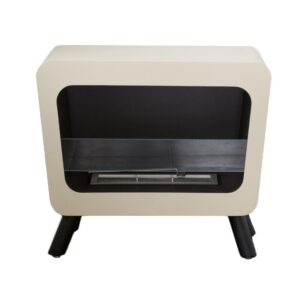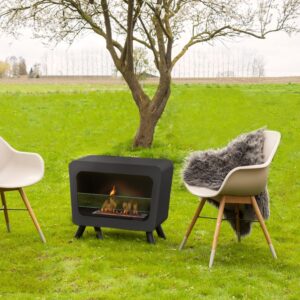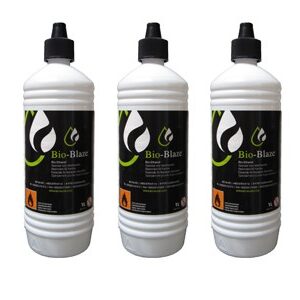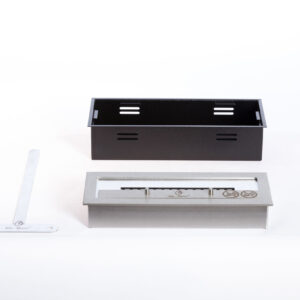Description
Unscented bioethanol Bio-Blaze 12x1L (box)
Details
Bioethanol is a source of renewable energy resulting from the fermentation of sugar or starch from sugar beet, beet or other sugar or starch sources. Ethanol is used as a fuel for bioethanol fires. Bioethanol combustion does not require a stack or a chimney. As many new buildings are being built without chimneys and fireplaces, bioethanol fireplaces are an environmentally friendly and modern alternative to enjoying a living fire.
It is an environmentally friendly product!
No chimney, gas or smoke! Fireplaces use bioethanol fuel to produce heat, creating a cosy, lively fire in the living space. Bioethanol burns completely and is non-toxic. Like a candle, it releases a small amount of carbon dioxide and water vapour.
Bioethanol at the service of GREEN FUELS
At the end of 2020, EU Heads of State and Government agreed a target to reduce greenhouse gas emissions by 55% by 2030 compared to 1990 levels across the EU. According to Jüri Ratas, our Prime Minister at the time, the agreement reached is important above all for achieving climate neutrality in Europe by 2050 at a reasonable pace.
Although according to 2019 data, Estonia has reduced its emissions by a full 62% compared to 1990, the country has committed itself to reaching a 70% greenhouse gas reduction by 2030.
N.B. As bioethanol combustion only emits heat, steam and carbon dioxide, its use as a heat source actively contributes to climate neutrality.
Definition and classification of biofuels
In an energetic sense, a fuel is a substance that releases a large amount of heat when it combines chemically with an oxidant, commonly known as oxygen.
Substances that meet the following conditions are considered to be fuels:
- sufficient supply or resilience in nature,
- good availability and relatively easy production,
- the reaction with the oxidizer is fast and highly efficient,
- combustion residues do not pollute the environment in a dangerous way.
Like fossil fuels, biofuels can be categorised into solid, liquid and gaseous fuels.
Solid biofuels are mostly wood-based, green, fruit-based or blended with various additives.
Liquid biofuels do not exist in nature and are produced by mechanical, biological and thermochemical conversion of biomass. According to the EU directive, bioethanol, biodiesel, biomethanol and other biofuels are considered liquid biofuels.
Gaseous biofuels also do not occur in nature. When dispersed, methane-rich soy gas is produced by natural fermentation processes, but it is not used as a fuel. Gaseous biofuels are produced by fermentation or thermochemical processes and are best known as biogas (including landfill gas), biohydrogen and synthetic biogas.
Bioethanol with a non-existent footprint
Bioethanol is a fully renewable energy source, the raw material of which can be an alcoholic beverage obtained from the fermentation of wheat, maize, sugar beet, sugar cane, beet or any other plant material containing sugar or starch. Bioethanol production technologies are constantly improving and today bioethanol can also be produced from potato peelings and fruit waste.
Bioethanol production process
Bioethanol is a fuel produced by the decomposition of organic waste. In the case of sugar cane, for example, the juice is squeezed out of the plants and fermented. The fermentation of sugar or starch distilled by heating produces ethanol. Bioethanol burns completely, releasing heat, some water vapour and carbon dioxide.
Bioethanol properties
Toxicity
Bioethanol has been denatured with a number of substances to prevent its administration in pure form. This process also makes bioethanol safer to use and simplifies the sales process.
Combustibility
Bioethanol is a highly flammable liquid classified as Class 1B for flammability and PGII for delivery. The storage of bioethanol is regulated by national standards. In Estonia, the storage and handling of bioethanol is regulated by … law. (link)
Possible uses
Bioethanol is most widely used as an additive in motor fuels, reducing greenhouse gas emissions from vehicles by around 20%. However, as this can lead to a reduction in engine power, the debate on the feasibility of bioethanol as a fuel additive is not expected to end anytime soon.
But bioethanol also has another, rapidly expanding use. As bioethanol burns off completely, leaving only space-filling heat, a little water vapour and carbon dioxide as combustion residues, bioethanol can be considered an ideal fuel for biofuel stoves.
Why choose a bio-fireplace?
The biofuel for biochimneys is environmentally friendly bioethanol, which is produced from fully renewable biomass. Not to mention the not insignificant environmental arguments, the introduction of a biofuel stove is very simple and does not require major construction work to build a chimney or a five-flue stack.
Simply place the bio-fireplace where you want it, pour bioethanol into the firebox and you’re ready to start the fire. The cosy warmth of the room soon fills with the light of the peaceful flickering fire.
Since there is no need for a chimney or a five-burner stove, you can place the bio-fireplace wherever you want – in a country house or a luxury apartment, in the lobby of a hotel or on the living room table of an apartment building. With certain models, you can even take the bio-fireplace on wheels to another room.
A bio fireplace is an environmentally friendly and modern alternative to enjoying a live fire. The heat generated by the combustion of bioethanol stays in the room for some time, which in properly insulated buildings can last into the morning.





































